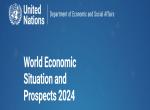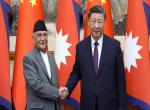If one takes the Global Hunger Index where India stands at 101 now, it maybe debatable but even if we notch it up to a liberal 90, it is still not only a matter of concern but it may indicate some flaws in policy and implementation. As Government of India makes determined efforts to achieve the Sustainable Development Goals by 2030 a multiple pronged strategy may be helpful to achieve each goal at a time. At the root of all social issues lie poverty which nullifies every other Human Development Index and Sustainable Development indicator. For example, while the second wave was continuing and towards its fag end and yet people were to be taking strong precautions, the author noticed a poor woman in the pavement without a mask least bothered about the danger lurking at every corner, that led to the realisation that “a hungry stomach doesn’t understand anything except to get food.” And that’s where a different approach may be helpful.
The Government of India has made it mandatory to spend 2% of net profit made by the corporates towards social spending and given a list of broad activities under which they could make their spend.
The last Financial Year saw India Inc.’s profit to GDP hit a 4 year high at 2.63 percent and the combined net profit of listed companies were at INR 5.31 trillion at FY 21. The IMF had mentioned India is the only country to have registered a double-digit growth in 2021. Therefore, with the above premise, and with 6% (approximately 86.8 million) of India’s population living in extreme poverty, concentrated effort can be made taking the partnership of every listed organisation in addressing social issues specially addressing SDG 1 of “No Poverty”. For example: there are many Human Development indicators like education, water and sanitation, health etc. each country could identify at the policy level the most pressing social issue and accordingly navigate its resources towards addressing that problem while at the same time addressing the other issues. This is very achievable, if a certain portion of the CSR funds as decided by every listed organisation in every state is relegated to fighting poverty whilst continuing with their own CSR agenda.
The state on the other hand could play the role of an enabler by providing the data of any area an organisation wishes to take up and facilitate them in identifying those under poverty and let it even be in 2 digits but at least within a year the cumulative effort would lead to substantial number of people rising above the poverty line.
The mandatory 2% spend on CSR has been seen as draconian by many organisations and they find ways and means to evade taxes, whilst rightfully the profits any organisation earns is solely their effort and sweat but they must not forget their rise has been with the goodwill of the community and support from the government as well in terms of getting subsidised land, water and electricity. It has never been how big or small an organisation is in terms of revenue or profitability but the basic values that makes an organisation earn the respect of the common people which is not through products or services alone but through the empathy they could have towards a community’s well being that has made them where they stand tall today. Globally from India the Tata Group stands as the tallest example of philanthropy.
Similarly there are many other organisations individuals’ community who do wonderful work of ensuring that people rise above poverty for example the Sikh community has imbibed amongst every fellow member to ensure that no Sikh should ever beg and give them some work. India as a nation is known for its philanthropy at an individual level as we often see if anyone comes while having a meal, we readily offer to share our food even if we don’t. Know the person well. Therefore, with our own value systems, and strong political will and social commitment we could emulate our own good examples at home and wipe away poverty from the remaining 6% population of India in a mission approach within the next few years.
(The paper is the author’s individual scholastic articulation. The author certifies that the article/paper is original in content, unpublished and it has not been submitted for publication/web upload elsewhere, and that the facts and figures quoted are duly referenced, as needed, and are believed to be correct). (The paper does not necessarily represent the organisational stance... More >>
Image Source: https://vilindia.com/wp-content/uploads/2016/04/sustainability-p1.jpg











Post new comment